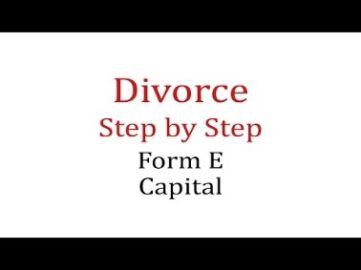
Some assets might have a small scrap value, but others, e.g. property, might have a substantial sale value. B) The company would save $3,000/annum by sub-contracting component W, and $2,000/annum by sub-contracting component Z. A subcontractor has offered to supply units W, X, Y and Z for $12, $21, $10 and $14 respectively. A high margin of safety shows a good expectation of profits, even if the budget is not achieved. Sabre Products Ltd. budgets to make and sell 3,600 units in the next year. D) The information on which a decision is based is complete and reliable.

For example, if a company has two year lease for piece of machinery, that cost will not be relevant to a decision on whether to use that machinery on a new project which will last for the next month. A change in the cash flow can be identified by asking if the amounts that would appear on the company’s bank statement are affected by the decision, whether increased or decreased. This concept is only applicable to management accounting activities; it is is not used in financial accounting, since no spending decisions are involved in the preparation of financial statements. E) Employees affected by the closure must be made redundant or relocated, perhaps even offered early retirement. There will be lump sums payments involved which must be taken into consideration. For example, suppose closure of a regional office results in annual savings of $100,000, fixed assets sold off for $2 million, but redundancy payments would be $3 million.
What is the difference between relevant and irrelevant costs?
StudyByTech (SBT) was conceptualized to help CA students save the most precious resource – Time. We do that by converging the rigor of face to face classroom with the fun of on-demand-virtual classes. Our services include live and recorded classes by some of the best CA faculty across the country.
WASH and Rehabilitation Coordinator (Expat Position) – Syrian Arab … – ReliefWeb
WASH and Rehabilitation Coordinator (Expat Position) – Syrian Arab ….
Posted: Thu, 03 Aug 2023 20:59:37 GMT [source]
The concept of relevant cost is used to eliminate unnecessary data that could complicate the decision-making process. As an example, relevant cost is used to determine whether to sell or keep a business unit. Ndlovu Ltd. manufactures a single product, which has a variable cost of sale of $8/unit and a sales price of $12/unit.
Types of relevant cost
This effect is known as an opportunity cost, which is the value of a benefit foregone when one course of action is chosen in preference to another. In this case, the company has given up its opportunity to have a cash inflow from the asset sale. The variable cost is $3/unit and the variable cost of selling is $1/unit. The term opportunity cost does not have a single, precise definition in all of its uses.
- Calculate the relevant costs of material for deciding whether or not to accept the contract.
- Our services include live and recorded classes by some of the best CA faculty across the country.
- The costs which should be used for decision making are often referred to as “relevant costs”.
- Your manager has been reading about Relevant Costing and how this allows a company to lower its costs.
- These are costs that play a key role in the making of a product or any other investment decision.
A manager must determine the relevant cash flows to evaluate the investment opportunities, such as total cash outflows or inflows. In cost accounting, relevant costs are costs that will contribute to achieving the organisation’s revenue-generating objectives. For an organisation to achieve its profit objectives, the revenues must exceed the relevant costs. Relevant costs should be considered if the organisation’s purposes change. So, which costs should be considered while analyzing the product or service? Every business incurs tens (hundreds at times) of costs and the selection criteria could become confusing.
Accept or Reject a Special Order
The issue is what was the true Marginal Cost of keeping someone in prison. The article rightly draws the distinction between the costs that would change and those that wouldn’t. A full discussion would include the costs of alternative treatments other than prison. Calculate the relevant cost for the order and the price RTC should quote. The cost of oil that will be used on the order is $1,000.The current market value of the required quantity of oil is $1,200.
An examination of the design for a prefabricated housing unit in … – Nature.com
An examination of the design for a prefabricated housing unit in ….
Posted: Thu, 03 Aug 2023 12:23:39 GMT [source]
A) The relevant costs are the differential costs between making and buying. They consist of differences in unit variable costs plus differences in directly attributable fixed costs. Differential analysis, marginal costing, and activity-based costing are some of the techniques utilized in similar costing (ABC).
However, the cost of corporate overhead is not a relevant cost, since it will not change as a result of this decision. A big decision for a manager is whether to close a business unit or continue to operate it, and relevant costs are the basis for the decision. Assume, for example, a chain of retail sporting goods stores is considering closing a group of stores catering to the outdoor sports market. The relevant costs are the costs that can be eliminated due to the closure, as well as the revenue lost when the stores are closed. If the costs to be eliminated are greater than the revenue lost, the outdoor stores should be closed. Brass Ltd. is concerned about its poor profit performance, and is considering whether or not to cease selling Ducks.
What is a Relevant Cost?
D) Decisions that will affect the cost structure and production capacity of the company. C) Sales mix decisions, to determine in what proportions each product should be sold. Opportunity costs only arise when resources are scarce and have alternative uses. Discuss the limitations of using Relevant costing when calculating unit costs.
- The cost effects relate to both changes in variable costs and changes in total fixed costs.
- Relevant Cost in managerial accounting means a cost that should be considered for decision-making purposes such as the cost-benefit analysis.
- For an organisation to achieve its profit objectives, the revenues must exceed the relevant costs.
- A manager has to choose between at least two alternatives to take the right decision.
Make-or-buy decisions, special order decisions, and shutdown decisions are some of the most general applications. Define the term ‘relevant cost’ and give examples of both relevant and non-relevant (irrelevant) costs. Committed costs – a category of sunk cost where you will continue to pay (in the future) even after you make the decision to not identity thieves used leaked pii to steal adp payroll info continue. As supervisor’s salary is a fixed cost unchanged by the work performed on this order, it is a non-relevant cost. As these materials are not available in stock, these will have to be purchased at the market price which is their relevant cost. The order requires a special type of rubber.Only 25% rubber is currently available in stock.
Material – if the buy-in option is accepted, the material cost increases from $12 to $15 per unit. Therefore, the closure of Production Line B is not a good idea as the revenue lost is greater than the value of the costs saved. Component B can be converted into Product B if $8,000 is spent on further processing. Component A can be converted into Product A if $6,000 is spent on further processing.
Only then can they make informed decisions that will lead to the best results for the company. Relevant Cost is a concept of Managerial Accounting that facilitates the cost-benefit analysis. It makes the decision-making process easier by focusing on cash flows that are directly linked to the project or product and which could be avoided if the product or project is not proceeded with.

Committed costs are costs that would be incurred in the future but they cannot be avoided because the company has already committed to them through another decision which has been made. The breakeven point may be read from the graph as $18,000 in sales revenue, and the margin of safety is $3,600 in sales revenue or 16.67% budgeted sales revenue. Ii) the opportunity cost of the leather (not represented by any outlay cost in connection to the project). B.) The depreciation of the new additional machine, $10,000, is relevant since the company will incur such cost only when it decides to buy the new machine.
The shutdown decision would involve an assessment of the net capital cost of closure ($1 million) against the annual benefits ($100,000 per annum). B) If the decision is to shut down, whether the closure should be permanent or temporary. Shutdown decisions often involve long term considerations, and capital expenditures and revenues.
The production engineering department at Goya Manufacturing Ltd. has submitted a proposal to manufacture the Pip in-house. The variable cost per unit produced is estimated at $1.20 and additional annual fixed costs that would be incurred if the Pip were manufactured are estimated at $20,800. C) In this example, relevant costs are the variable costs of in-house manufacture, the variable costs of sub-contracted units, and the saving in fixed costs. CVP analysis is based on the assumption of a linear total cost function (constant unit variable cost and constant fixed costs) and so is an application of marginal costing principles. E.) After analyzing the relevant costs, the company will have a net annual savings of $18,000. The company will be able to decrease its variable costs by $28,000 but will incur in incremental costs of $10,000 due to increase in depreciation.
Make vs. buy decisions are often an issue for a company that requires component parts to create a finished product. For example, a furniture manufacturer is considering an outside vendor to assemble and stain wood cabinets, which would then be finished in-house by adding handles and other details. The relevant costs in this decision are the variable costs incurred by the manufacturer to make the wood cabinets and the price paid to the outside vendor. If the vendor can provide the component part at a lower cost, the furniture manufacturer outsources the work. The price of $2.50 is considered to be competitive, and the supplier has maintained good quality service over the last five years.
Fixed costs, such as a factory lease or manager salaries, are irrelevant because the firm has already paid for those costs with prior sales. Sunk costs include historical costs that have been taken up or paid by the company, hence will not be affected by future decisions. Unavoidable costs are those that the company will incur regardless of the decision it makes. Good examples include committed fixed costs such as insurance and current depreciation.
0 Comments